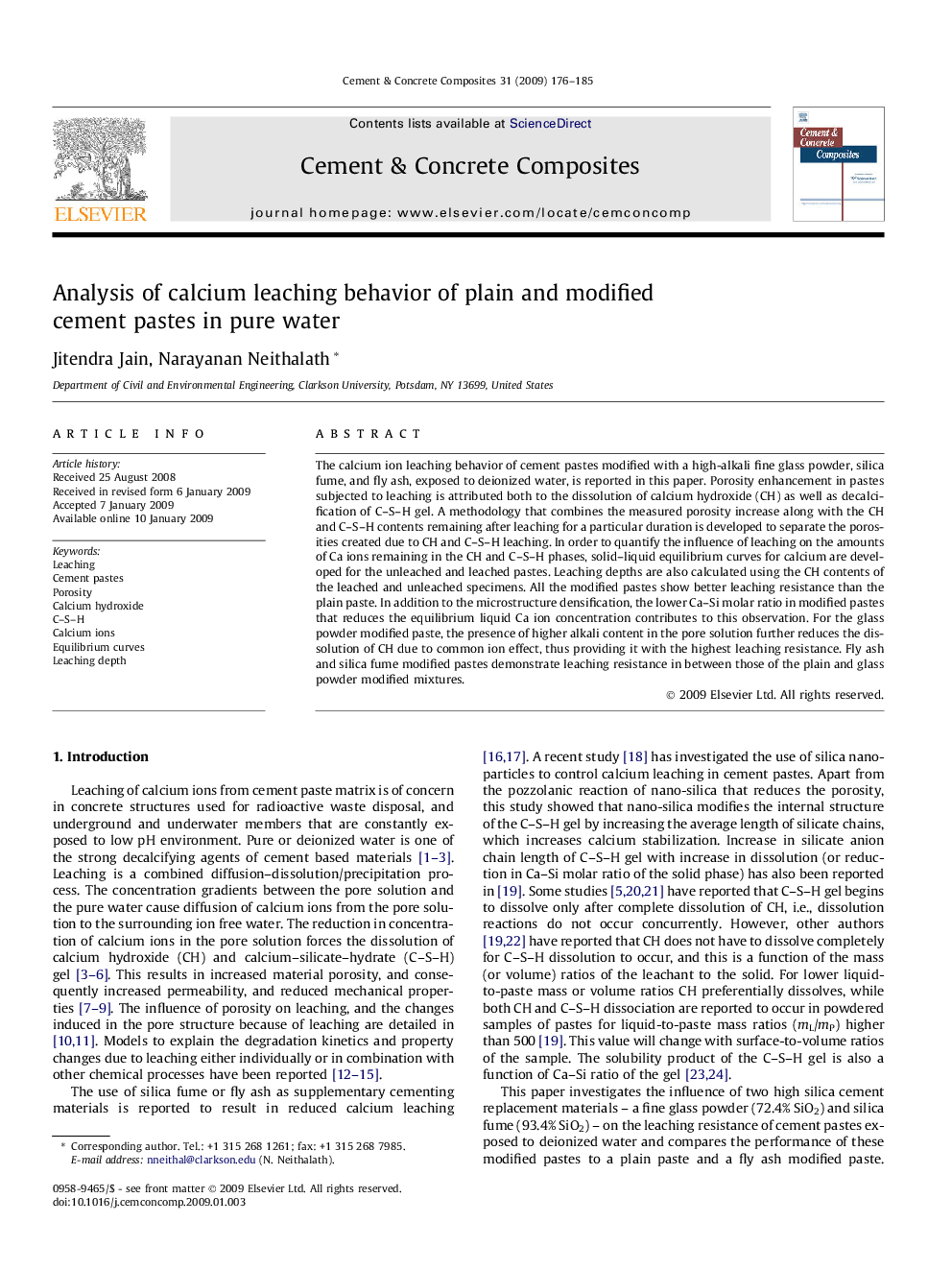| Article ID | Journal | Published Year | Pages | File Type |
|---|---|---|---|---|
| 1455244 | Cement and Concrete Composites | 2009 | 10 Pages |
The calcium ion leaching behavior of cement pastes modified with a high-alkali fine glass powder, silica fume, and fly ash, exposed to deionized water, is reported in this paper. Porosity enhancement in pastes subjected to leaching is attributed both to the dissolution of calcium hydroxide (CH) as well as decalcification of C–S–H gel. A methodology that combines the measured porosity increase along with the CH and C–S–H contents remaining after leaching for a particular duration is developed to separate the porosities created due to CH and C–S–H leaching. In order to quantify the influence of leaching on the amounts of Ca ions remaining in the CH and C–S–H phases, solid–liquid equilibrium curves for calcium are developed for the unleached and leached pastes. Leaching depths are also calculated using the CH contents of the leached and unleached specimens. All the modified pastes show better leaching resistance than the plain paste. In addition to the microstructure densification, the lower Ca–Si molar ratio in modified pastes that reduces the equilibrium liquid Ca ion concentration contributes to this observation. For the glass powder modified paste, the presence of higher alkali content in the pore solution further reduces the dissolution of CH due to common ion effect, thus providing it with the highest leaching resistance. Fly ash and silica fume modified pastes demonstrate leaching resistance in between those of the plain and glass powder modified mixtures.
